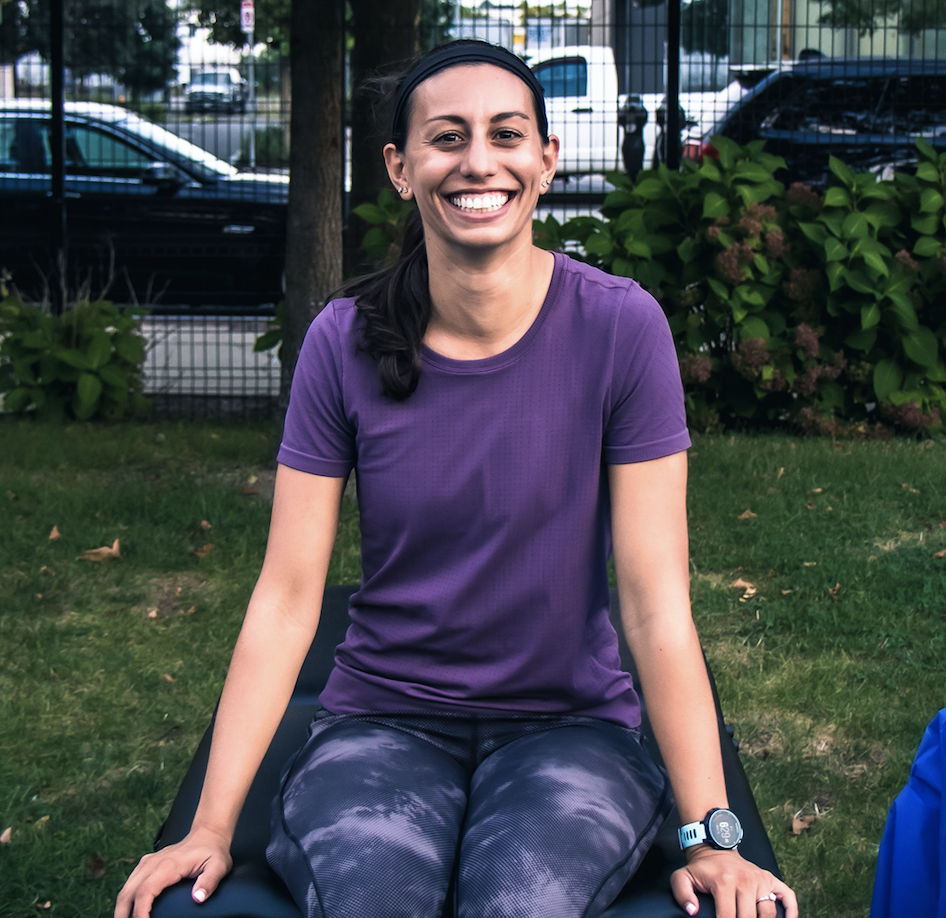5 Ways To Maximize Your Return To Running Postpartum

Are you recently postpartum and experiencing pain while running? With any sport or activity, there is a risk of injury or pain that can develop. Injuries are the most common reason for a person to stop running. As you read this, can you honestly say you never had any type of running injury before? Well you are not alone, because injury incidence in runners is over 80%! Most of these injuries can be prevented with improvements in running programs and slower build in mileage.
After connecting with more mom runners in the community, I came across a common theme. We ALL just want to be able to run and run pain free. We don’t want injury or anything else to get in the way of going for a run. There is something about running that gives us a mental clarity and freedom, even when it can feel difficult.
Postpartum runners make up a large portion of runners, and therefore exploring how you can continue to run or stay active during pregnancy will aid in your return to run postpartum, and understanding how to decrease your risk of pain when returning to running after a baby, is imperative.
5 Ways To Maximize Your Return To Running Postpartum
Healing Timelines
So let’s take a few steps back. There are few things to consider before you return to running postpartum. First, is that your body needs time to heal. You had a lot of changes occur to your body over the last 9 months to accommodate for your growing baby. Your body and posture have changed and your organs have shifted. Also, understand that it is necessary for time to pass so you can heal. It can take months for your organs to go back into the correct position postpartum and that is normal. Unfornately, we can not speed up the healing process and now is your time to be kind to yourself and work on full body strengthening, both double and single leg, and improving core and pelvic floor function.
Consider Obtaining A Return To Run Readiness Screen
Current research suggests waiting until ~12 weeks postpartum, then visit a postpartum Physical Therapist to obtain a return to run screen. This screen will take you through a series of tests to assess your balance, strength, tolerance to impact, and posture. These tests will determine how your body is moving. It will evaluate your strength in moving from right to left, as well as how you tolerate the load-demands that running places on your body. Doing too much too soon can increase your risk for prolapse, injury, or incontinence to name a few.
A recent study published in August 2021 by Christopher, Cook, and Snodgrass (1), women who were at risk of injury during a run postpartum were found to:
- Had a previous injury
- Sleep less than 6.8 hours a night
- Had a vaginal delivery
- Showed symptoms of incontinence
- Or have less running experience
Postural Control Can Be A Game Changer!
In another study, by Provenzano, et al. suggests that postpartum runners have a more restricted pelvis and trunk motion with increased running gait stability, potentially as a protective response due to the changes that occur to your body during pregnancy (2). What this means is that your running mechanics and posture can change during your walks and runs postpartum. You can be more proactive by being more aware of how you are standing and walking throughout the day. This will help you combat some of these changes.
Try This: Think about keeping your ribs stacked over your pelvis. Check in and be sure your ribs are not flared up towards the ceiling. Also, check that you are not gripping your ribs down and in. In either of these positions you should be able to breathe in and expand through your sides, back, and slightly into your belly. If you are unsure where your ribs like to rest, check it out in a mirror and find a neutral position. This may mean that your shoulders are rounding forward some. We can work on that later! Next, check in with your pelvis. Do you notice your pelvis tilting forward (anterior pelvic tilt) or your glutes gripping, pulling your pelvis underneath you (posterior pelvic tilt)? Find somewhere in between those positions and practice that first in standing and walking. Again a mirror can be helpful.
Check out this video to learn more:
Fatigue IS REAL As A New Mom
When we think about exercise, sometimes we miss the other factors we should take into consideration outside of the workout. How much are we fueling our body? How much sleep are we getting a night? As a new mom, sleep can be disturbed quite frequently and sometimes this is just out of our control. Be mindful of how much sleep you are getting each night. This is especially important on days you are working out. Sleep interruptions leading to fatigue is a predetermined factor in increasing risk of pain (1). Getting at least 6.8 hours of sleep a night will help decrease your risk of injury.
Previous Injuries May Arise
If you had an injury or pain in the past, sometimes postpartum, this pain can come back with a vengeance. The areas where my clients have the most discomfort are usually their lower back, pelvis, and upper back. This is due to ligament laxity, changes in center of gravity, and hormonal changes. These are only a few examples of discomfort. These injuries could resurface especially when you are doing an activity your body may not be ready for. Not to fear, if you are proactive you will be setting yourself up for success. Work on restoring mobility, core and pelvic floor strengthening techniques, and consult a PT before you return to run again. You do not need to have pain to see a postpartum physical therapist!
In conclusion, protective factors for return to run postpartum include the following:
- Waiting at least 12-weeks so your body can heal
- Obtain a return to run readiness screen by a physical therapist
- Work on postural control during and outside of your runs
- Make time to sleep when you are able. You may have to change your schedule so you can get more Zs
- Old injuries may arise so being proactive with strengthening exercises and seeking help from a PT is KEY!
Following these 5 tips will help maximize your return to running postpartum.
Resources:
1) Christopher, Cook, & Snodgrass. What are the biopsychosocial risk factors associated with pain in postpartum runners? Development of a clinical decision tool. PLOS ONE. 2021.
2) Provenzano, Hafer, et al. Restriction in Pelvis and trunk motion in postpartum runners compared with pre-pregnancy. Journal of Women’s Health Physical Therapy. 2019.

Juliana is a Women's health and Orthopedic Doctor of Physical Therapy. She is the founder of Pacer Physical Therapy providing both in-home and virtual care to new moms and runners. She started Pacer PT to empower pregnant and postpartum moms who want to get strong through education, exercise, and healthy habits. Juliana believes that all women should have an equal opportunity to balance, family, work, and fitness so they can be healthy and active with their families.








